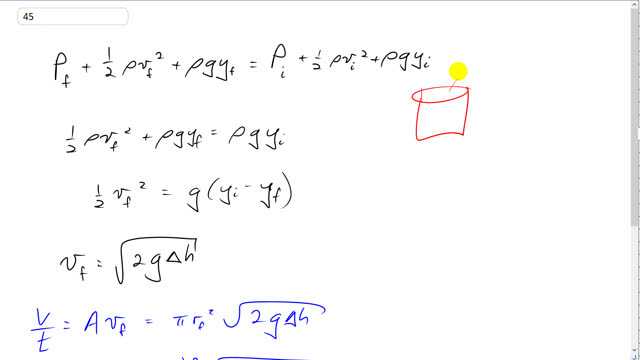
What is the volume rate of flow of water from a 1.85-cm-diameter faucet if the pressure head is 12.0 m?

In order to watch this solution you need to have a subscription.
This is Giancoli Answers with Mr. Dychko. We are dealing with a pressure head you assume that there's some storage tank of water which has its top open to the atmosphere in which case the pressure at the top of this water tank is atmospheric pressure. and then it has some distance that the pipe goes down to where the faucet is down in the house here. And the pressure at the open end of the faucet is also gonna be atmospheric pressure so that means these pressure terms in the Bernoulli's equation are the same so they just cancel away you can subtract them from both sides. And we also assume that this the diameter of this storage tank is really large in which case there's no significant rate of drop in the water level so we can make that zero and this leaves us with just one-half density times the speed of water at the faucet squared plus density times g times the y position of the faucet and that equals density times g times y-position of the top of the water level in the tank. And the ρ's cancel everywhere and we have one-half v f squared is g factored out from y-initial minus y-final and this y-initial minus y-final is the height, and pressure head in other words, and we can multiply both sides by 2 and then take the square root of both sides and you get the speed of water coming out of the faucet is square root 2g times the pressure head height. The volume rate of flow is the area of the faucet times this speed and so that's π times the faucet's radius squared times square root 2gΔh. That's gonna be π times 1.85 times 10 to the minus 2 meters over 2— we have to divide that diameter expressed in meters by 2 to get the radius and then square that— and then times by square root 2 times 9.8 times 12.0 meters that gives 4.12 times 10 to the minus 3 cubic meters per second is the volume rate of flow.